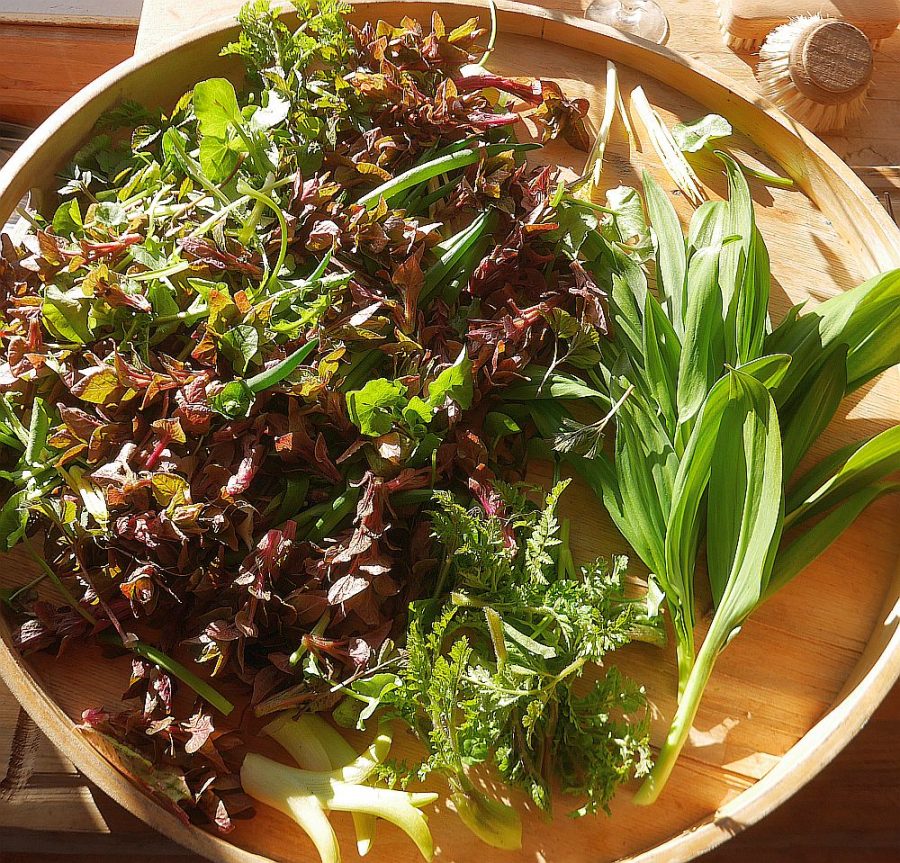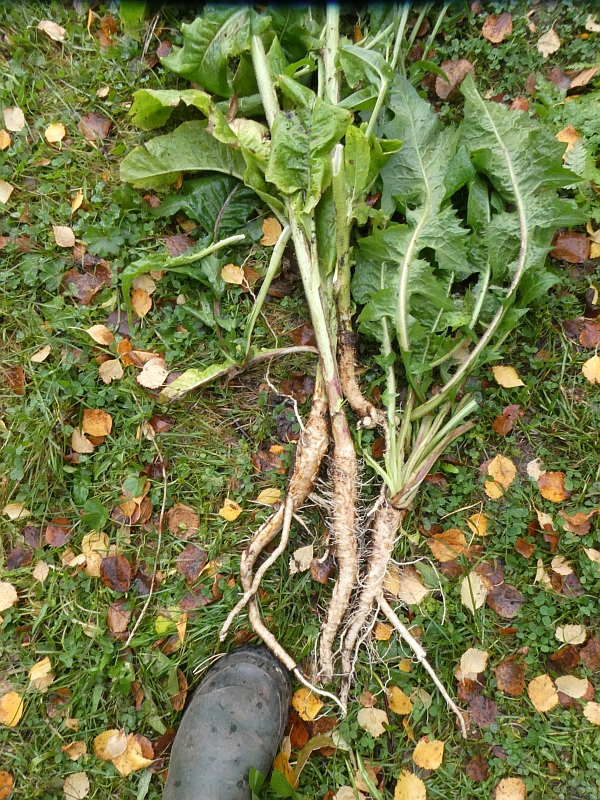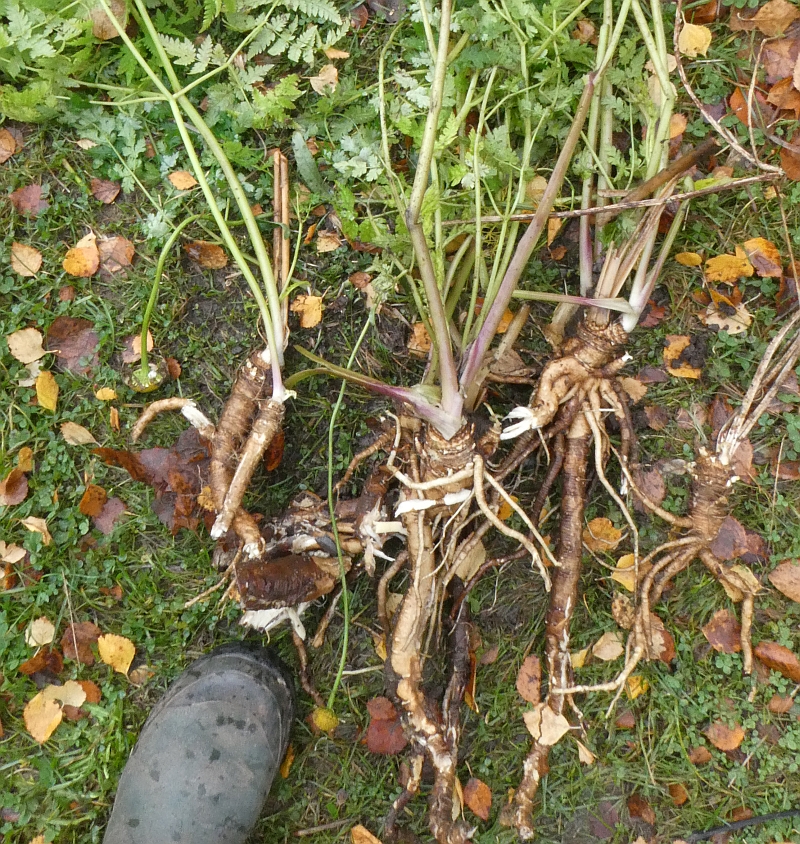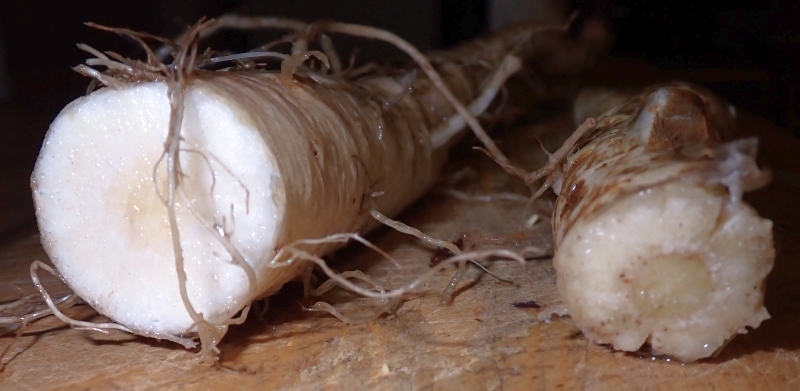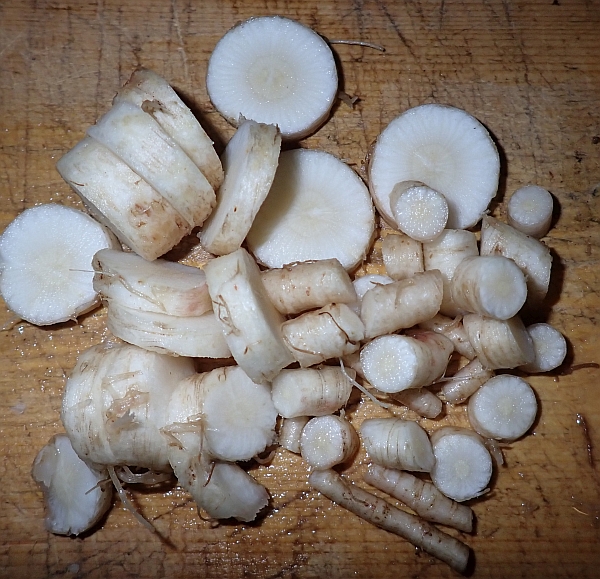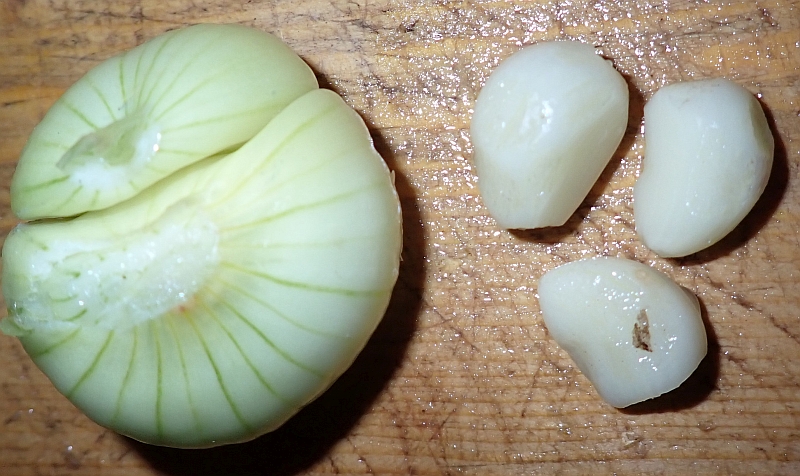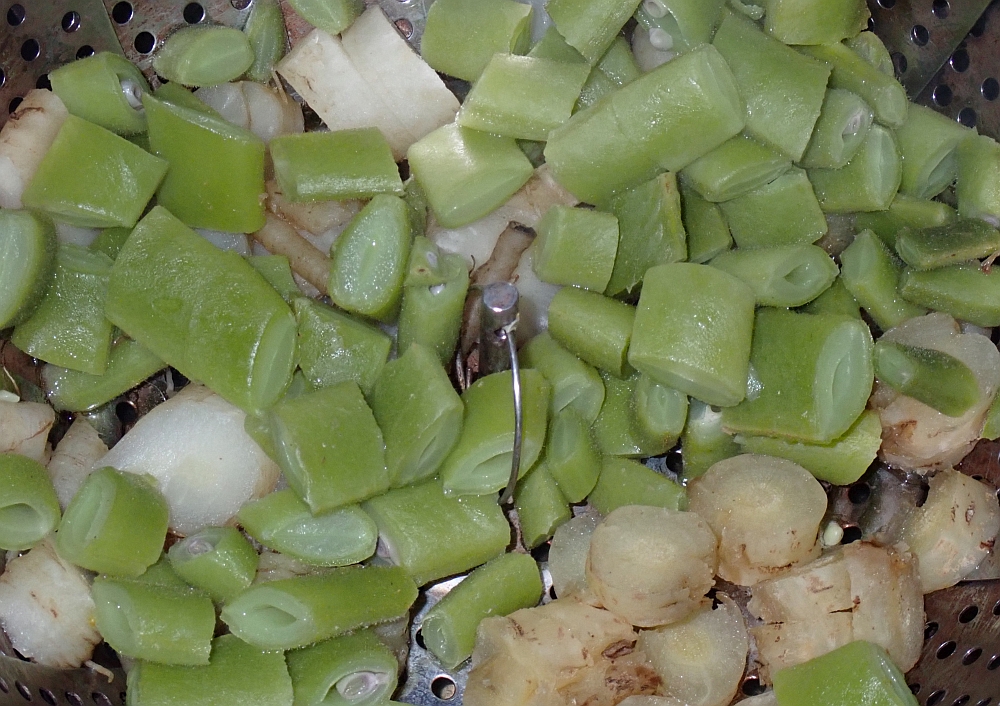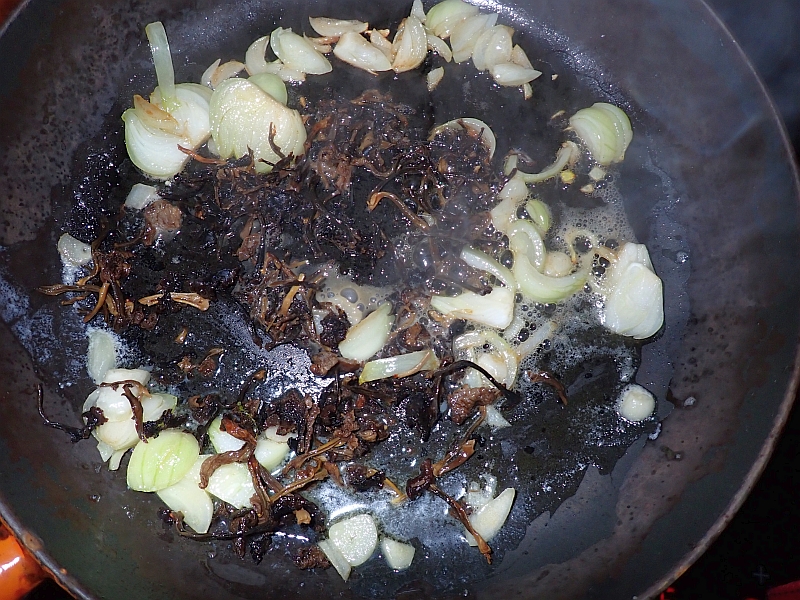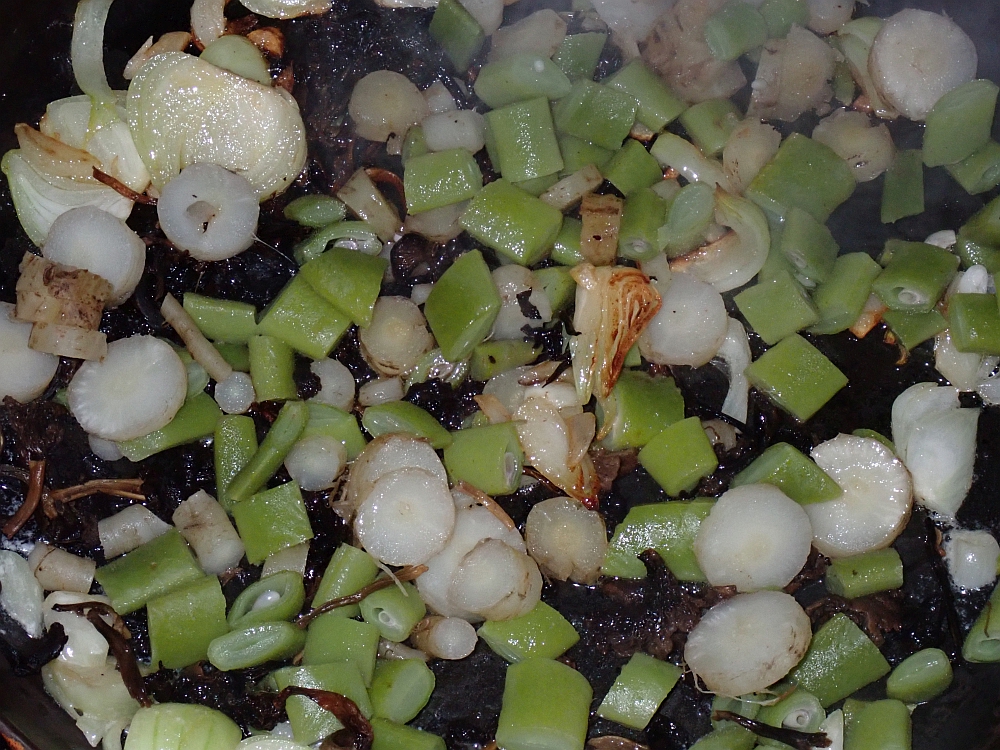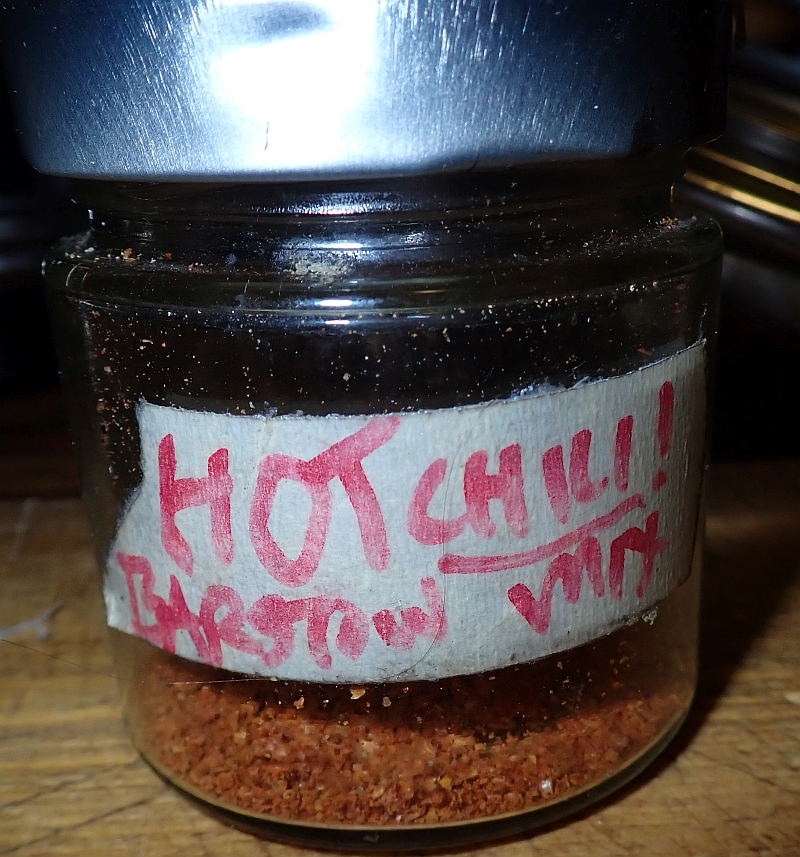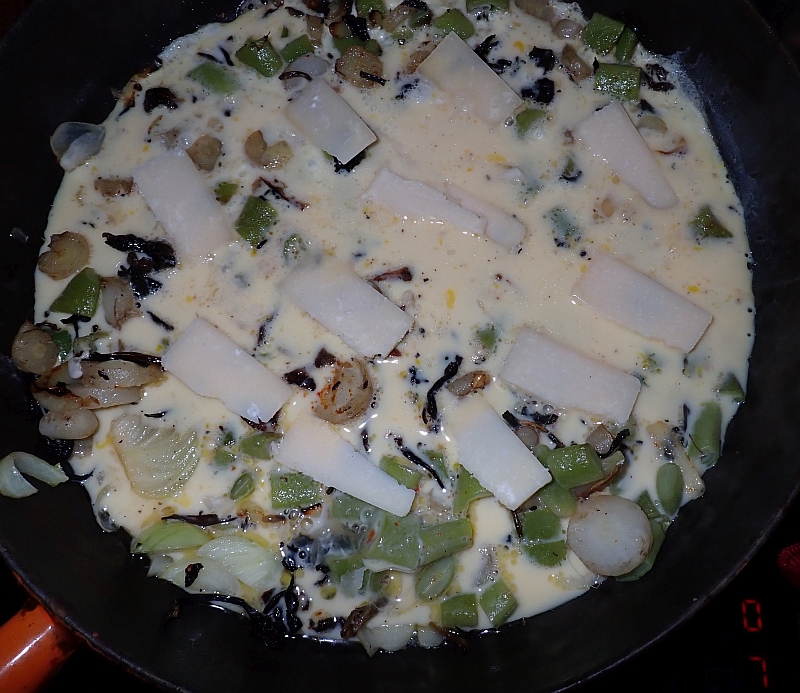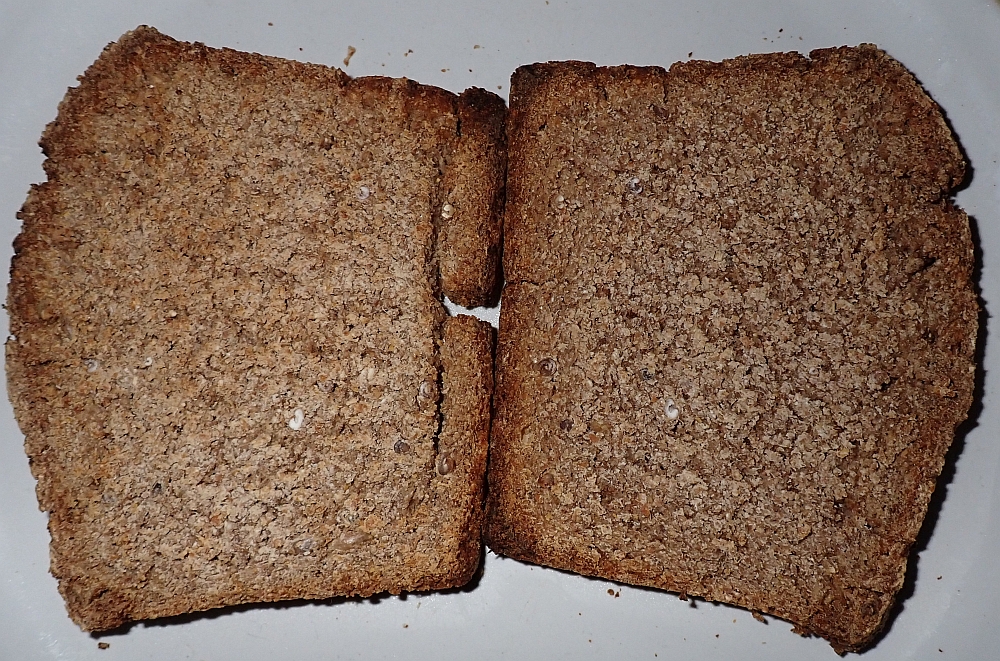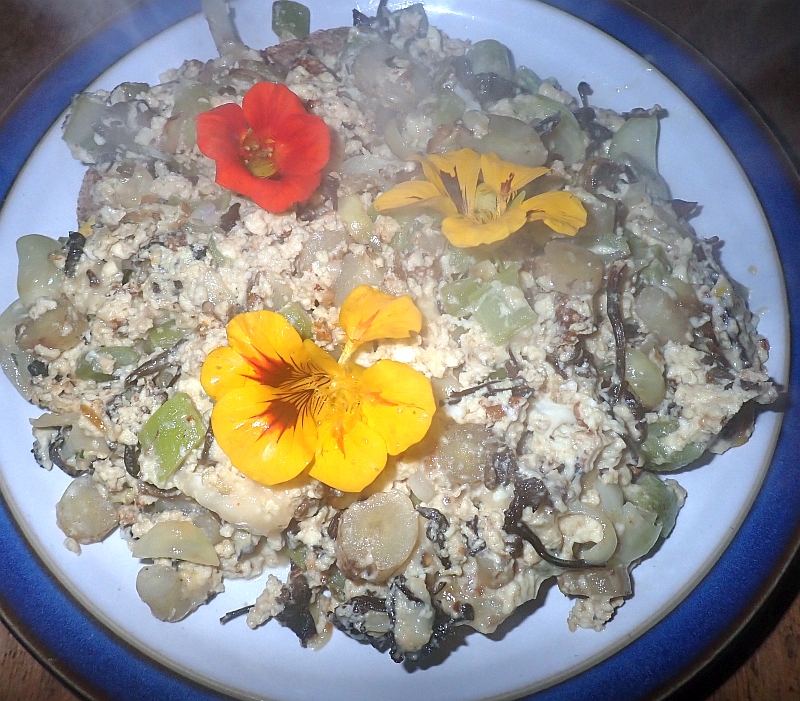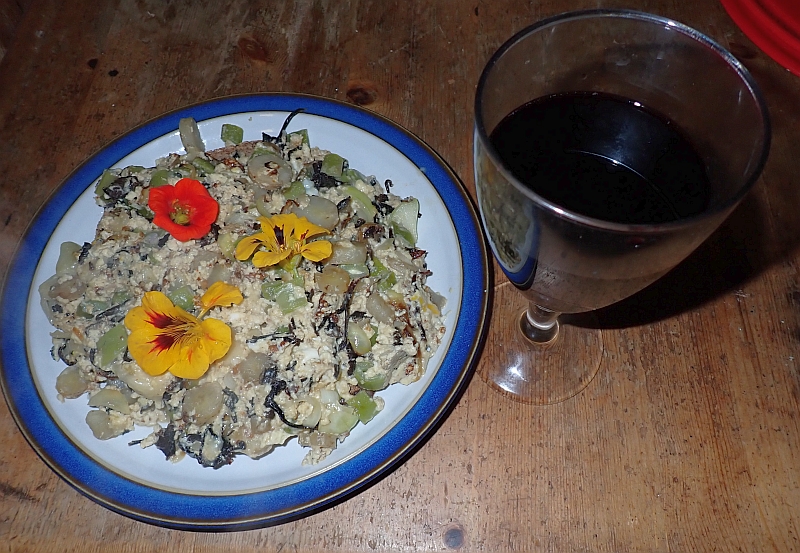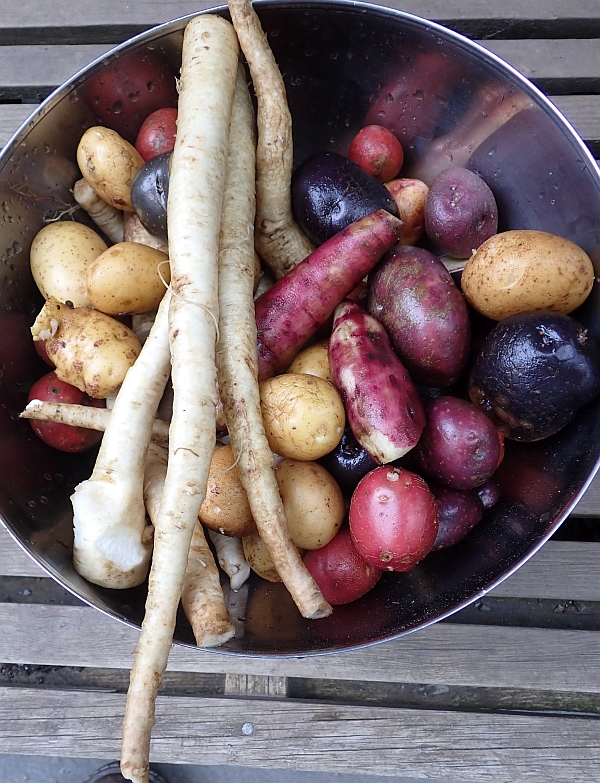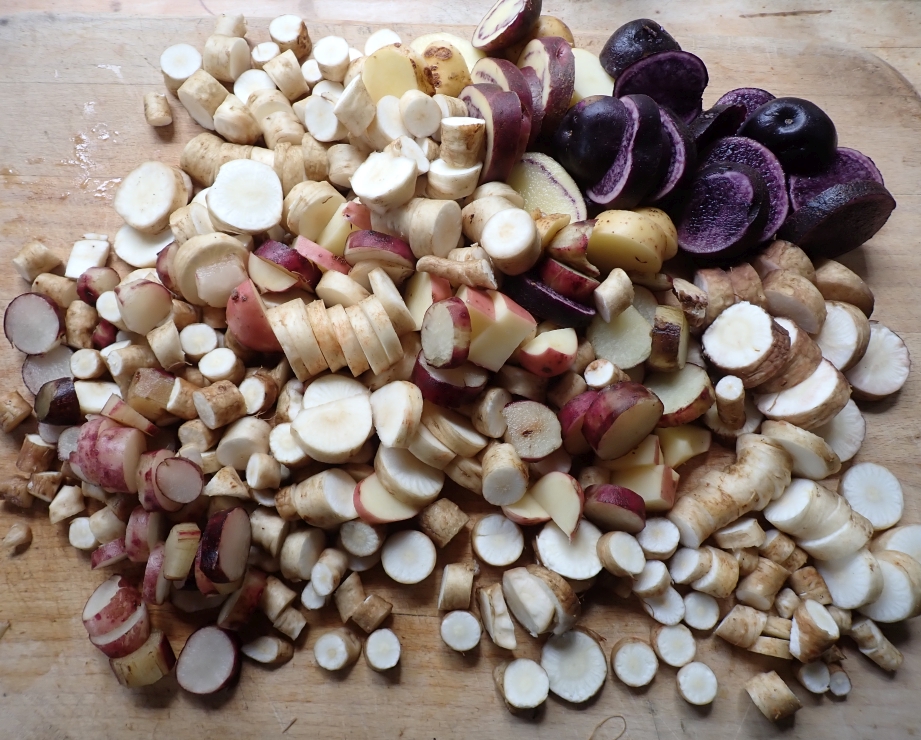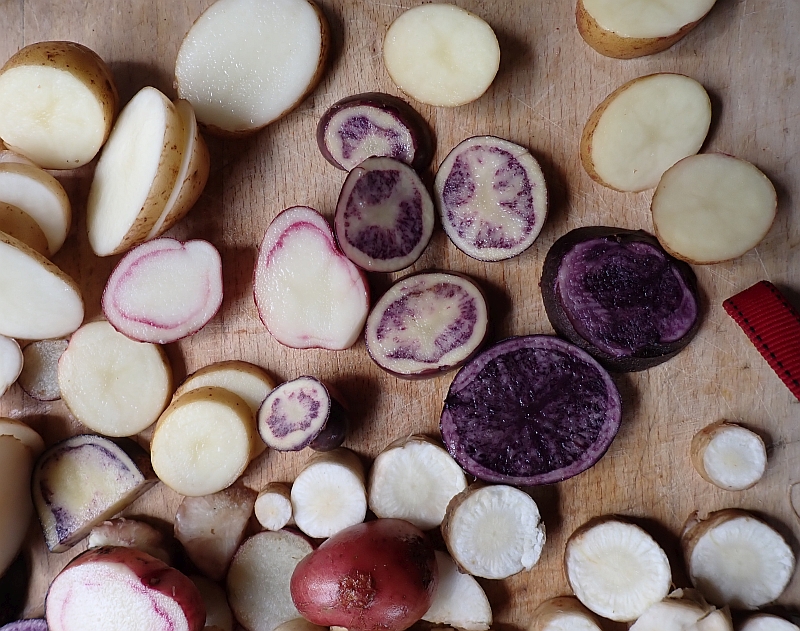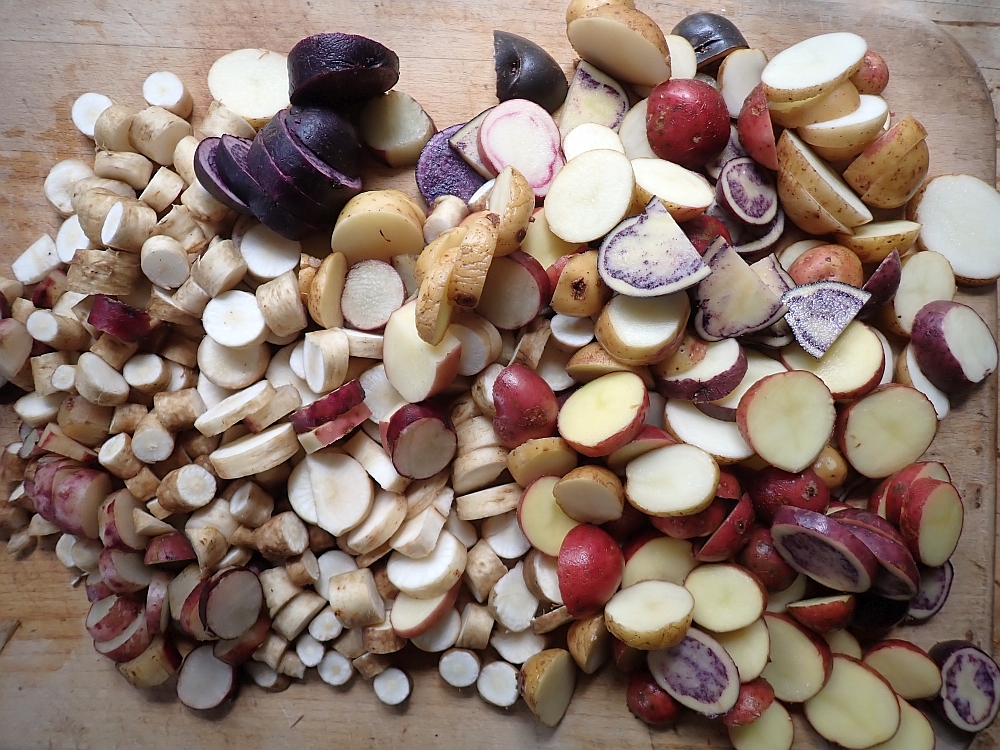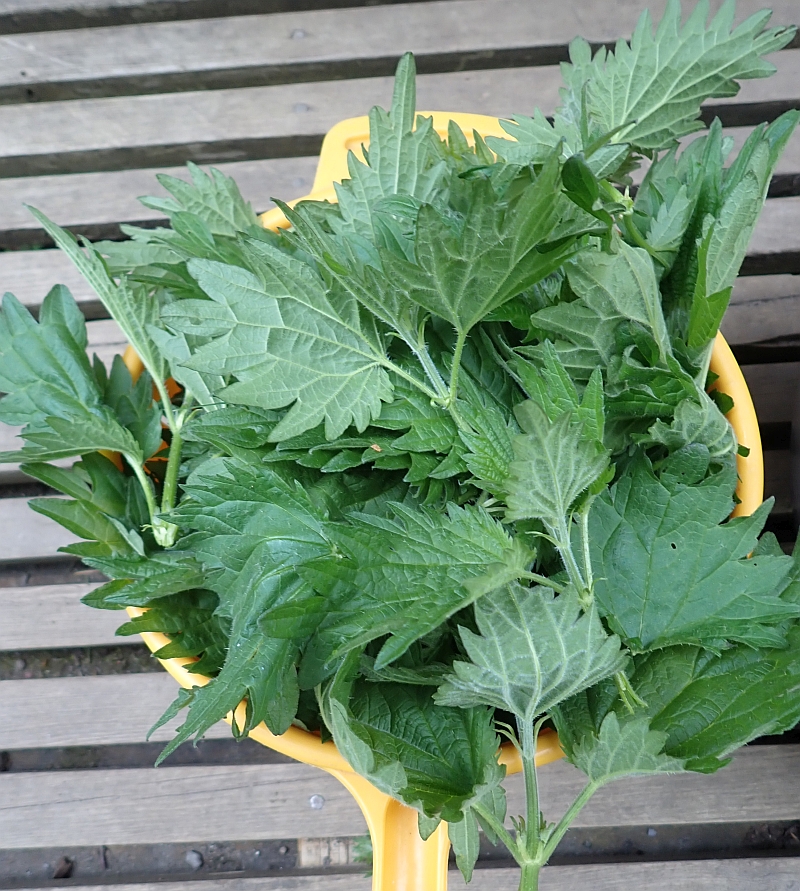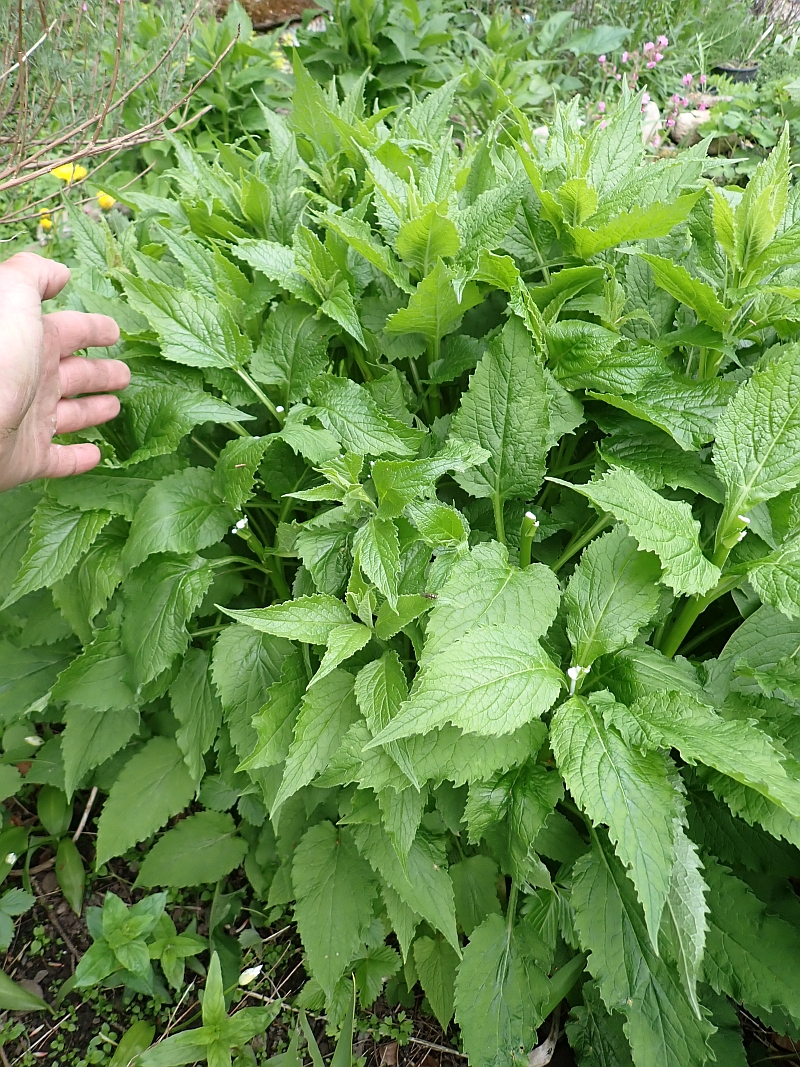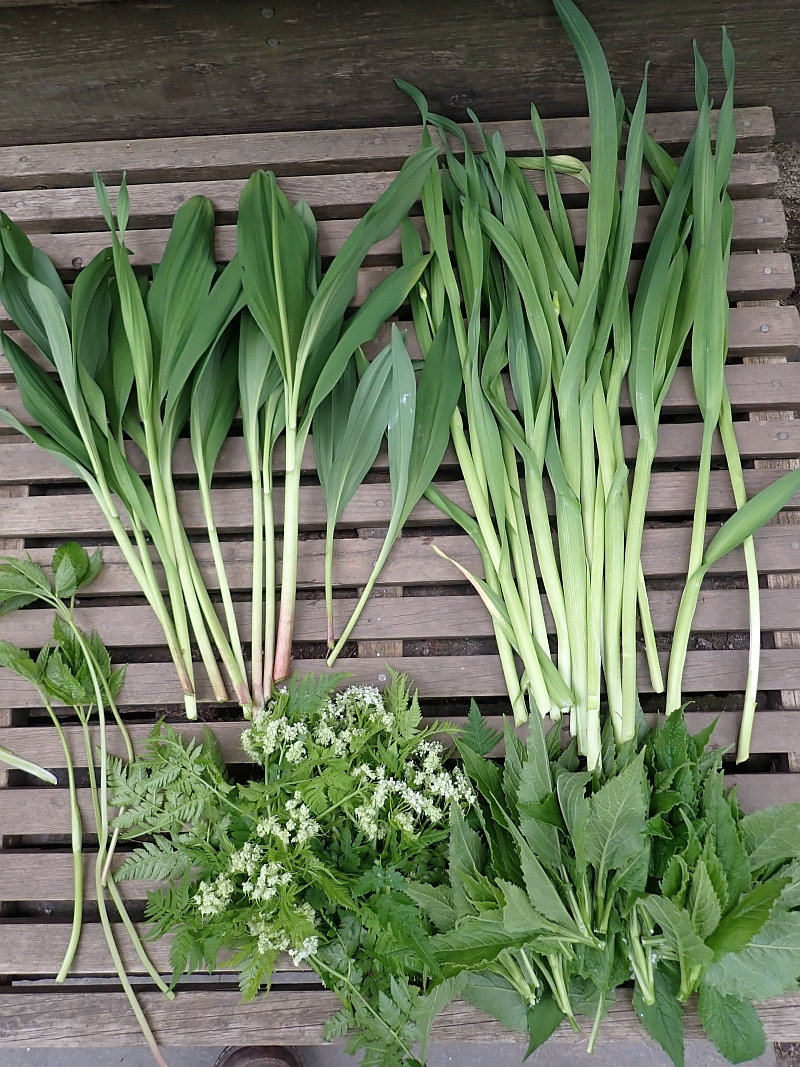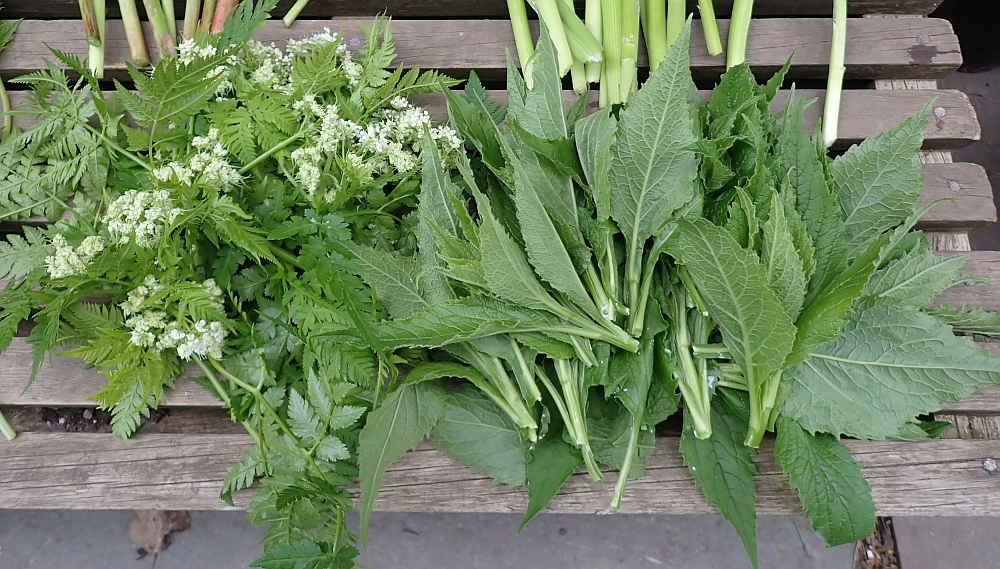On Sunday 26th May we organized a potluck party in Væres Venners Community Garden in Trondheim for the first time! It was a fantastically successful event in glorious summer weather close to 30C (and a record for May) and with 40 participants, both members of the community garden (and supporters) and KVANN Trøndelag members. The participants brought a large variety of food dishes as we had hoped! The highlight was Anders (and Barbro) Nordrum’s introductory lecture on food preparedness!
Thanks to everyone, we will be doing this again!
My contribution was naturally a salad and I had to apologise as there were only 50 plants in it ;)
The white flowers: ramsons (ramsløk), sweet cicely (Spansk kjørvel), Allium zebdanense and sea kale (strandkål).
General pictures by Dan Smith! 

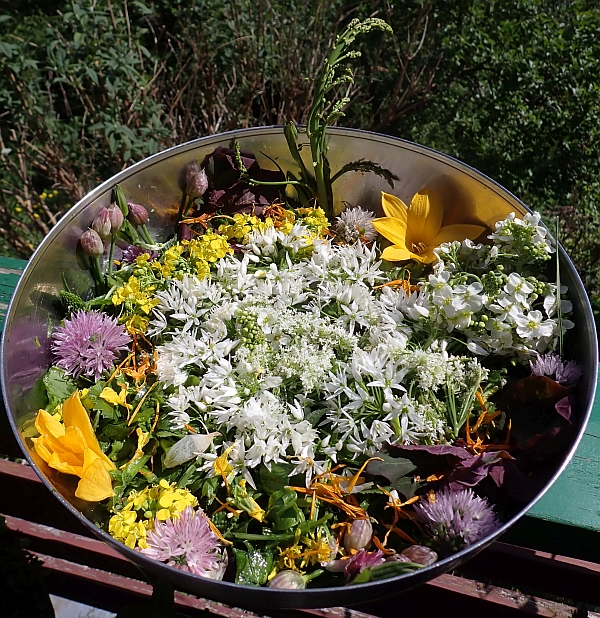
Tag Archives: sweet cicely
Sweet cicely / chicory root scrambled egg
I had been asked if I had photos of the roots of chicory (sikkori) and sweet cicely (Spansk kjørvel) for a talk about wild edible roots. I therefore dug some from the garden.
Inspired by traditional Mediterranean ways of preparing wild and cultivated vegetables, I boiled the roots and they were then stir-fried with onions and winter chantarelle mushrooms before being added to scrambled egg (see the pictures for more).
All the roots on the perennial chicory were far too fibrous to eat, but the sweet cicely roots were good (at least the younger ones!)
More or less any vegetable can be prepared this way!
Simple is best!
Bitter baccalao: roots and greens
No, I’m not vegan and have never been, I’ve been lactovegetarian with the occasional wild fish over 40 years. We always have some Norwegian dried cod (baccalao) at the ready in our cool larder. The usual way to make the dish baccalao here is to hydrate the fish for a couple of days and then layer potatoes, bulb onions, fish, tomatoes, garlic with olive oil, pepper and chili in large saucepan. I’ve always added seasonal greens too and often use green onions of various types instead of bulb onion.
Last night, we used the last of the potatoes from the cellar and as there weren’t many also used root chicory (di Sancino: an edible rooted variety that produces well here) and the last yacon roots, all still in perfect condition kept in the cellar in dryish leaves all winter! We also used a good bunch of nettles, tops of giant bellflower (Campanula latifolia) and sweet cicely (Myrrhis odorata) tops including the flowers. For the onions, sand leek (Allium scorodoprasum) and victory onion (Allium victorialis) were in perfect condition (beginning to flower).
The verdict on our first bitter baccalao? Delicious, but probably not for everyone!
Forced March Perennial Greens
In order to lengthen the season for harvesting of perennial vegetables, I dig up roots of a selection in the autumn and plant them in garden soil in large buckets (which I have a surplus of through my Allium project, now moved to the botanical gardens). As I explain in the video, all of these can be stored outside exposed to the cold as they are very hardy (minimum about -20C here), but some get a head start by moving into my cold cellar where they start growing slowly in the dark. Welcome to my living room:
These were the forced veggies used one day last week, from top left and across – Heracleum sibiricum (hogweed / bjørnekjeks); Campanula latifolia (giant bellflower / storklokke); Myrrhis odorata (sweet cicely / spansk kjørvel); Taraxacum officinale (dandelion / løvetann); (bottom row): Allium angulosum; Ficaria verna (lesser celandine / vårkål); Allium flavescens and Armoracia rusticana (horseradish / pepperrot); (centre right): wild buckwheat / vill bokhvete shoots – Fagopyrum tataricum)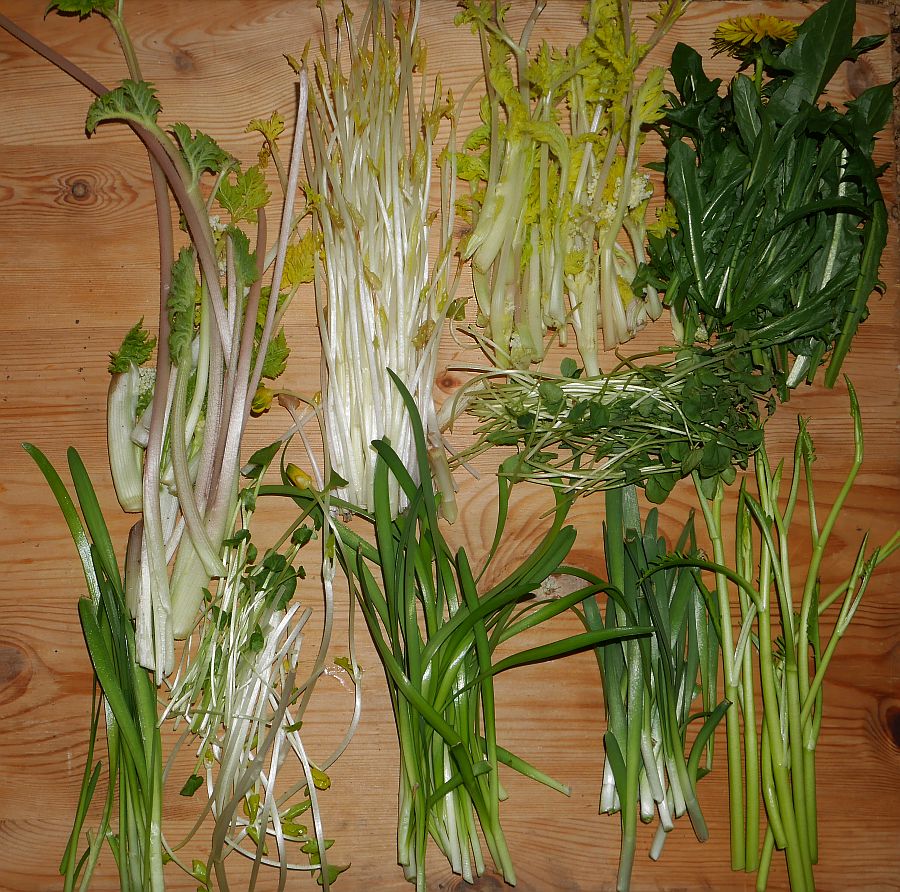
Mallows in season
Mallows (Malva spp.) are now in season for harvesting and will from now until autumn be an important source of greens and edible flowers. The best part are the flower buds with surrounding leaves. We started earlier in the week with musk mallow / moskuskattost (Malva moschata), a reliable perennial here that also self-sows in just about the right quantity. Traditionally, Malvas were often used in soups, so it was a good addition to pea soup along with
Hybrid onions (Allium senescens x)
Rumex acetosa (mixed Russian cultivars); sorrel / engsyre
Campanula trachelium tops (nettle leaved bellflower / nesleklokke)
Myrrhis odorata unripe seed pods (sweet cicely / spansk kjørvel)
Origanum vulgare (oregano / bergmynte)

Today’s perennial catch
23rd April 2020 perennial greens used in a delicious quiche (eggepai):
Hablitzia tamnoides (Caucasian spinach / stjernemelde)
Myrrhis odorata (sweet cicely / spansk kjørvel)
Rumex acetosa (sorrel / engsyre)
Campanula latifolia (giant bellflower / storklokke)
Urtica dioica (stinging nettle / brennesle)
Allium senescens
Heracleum sphondylium (common hogweed / kystbjørnekjeks)
Aegopodium podograria (ground elder / skvallerkål)
Dandies, habbies, sand leeks, sorrel and sweet cicely
7th April 2020 perennial greens used in a quinoa stir-fry:
Taraxacum officinale (dandelion / løvetann)
Allium scorodoprasum (sand leeks / bendelløk) (these grow semi-wild in seaweed on my sea kale bed)
Hablitzia tamnoides (Caucasian spinach / stjernemelde)
Myrrhis odorata (sweet cicely / spansk kjørvel)
Rumex acetosa “Belleville” (sorrel / engsyre)
25th March Veggies
These delicious fresh perennial vegetables were added tonight’s dal towards the end
Aegopodium podograria (ground elder; skvallerkål)
Allium cernuum (nodding onion; prærieløk)
Brassica oleracea (perennial kale; flerårige kål)
Ficaria verna (lesser celandine; vårkål)
Alliaria petiolata (garlic mustard; løkurt)
Hablitzia tamnoides (Caucasian spinach; stjernemelde)
Taraxacum officinale ( dandelion; løvetann) Forced and blanched in the cellar with flower buds now forming
Myrrhis odorata (sweet cicely; spansk kjørvel)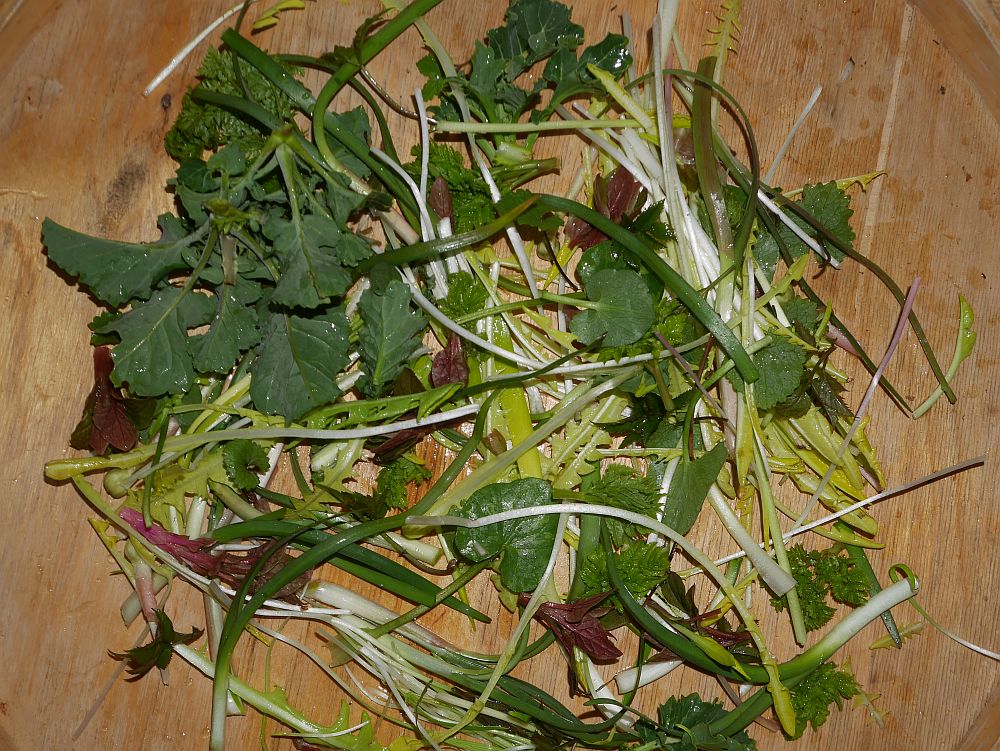
Perennial Myrrhis Sprouts
Sweet cicely (spansk kjørvel) is considered to be one of the worst invasive plants here and is now banned for sale and we don’t offer it through the Norwegian Seed Savers catalogue / yearbook. However, it’s one of the best edible perennials. It’s never spread in my garden as I’ve always eaten it, the best way to stop it spreading. In particular, eating the delicious flowers (in salads) and immature seeds (the best candy for kids) and collecting the mature seeds for winter sprouting, the best sprouts for winter stir-fries (sweet anise taste and a good size).
This year, I sowed the large seeds in a large pot and stratified outside for a couple of months before moving into the cellar where the temperature is warmer than usual this winter and there was mass germination a couple of weeks ago. A few will be used in a chinese style stir-fry tonight!
Eat your invasives!



9th April veggies
Lots of Hablitzia (stjernemelde), ground elder (skvallerkål), Svenskelauk (a form of Allium fistulosum), sweet cicely (spansk kjørvel), dandelion (løvetann), day lily shoots (daglilje), blanched horseradish shoots (pepperrot) and a variety of Allium victorialis (victory onion, seiersløk) which is the earliest form I grow along with one from the Kola peninsular in northern Russia; other varieties have hardly grown yet!
